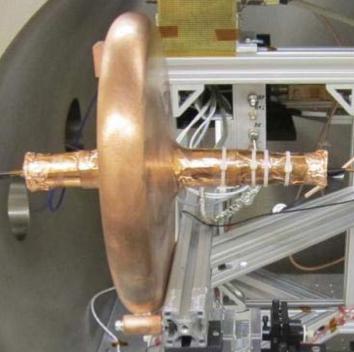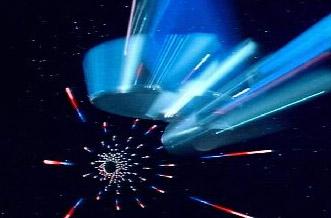The ‘Net has been buzzing about a paper published by a team of engineers at NASA claiming that they have built a device that creates thrust without propellant. There have been lots of articles written about it, it’s spawned a zillion tweets, and I’m getting plenty of email asking me about it.
Here’s the thing: I’m not convinced. I’m not saying it’s wrong, but I am saying it’s very, very likely to be some sort of measurement or experimental error.
I could write a lot about this, but instead I’ll point you to two people who already have written excellent discussions on what’s going on here: John Baez on Google Plus (you should read both his first article and his second one) as well as my old friend Steve Novella. Both dissect this report, and align pretty well with what I’m thinking. Update: After writing this post but before it went up, I found my friend Mika McKinnon also wrote a solid article about all this, too.
The bottom line here is what the team is proposing violates a very basic law of physics; all the forces inside the device appear to be balanced, yet a thrust is still generated. The law of conservation of momentum says that’s not possible. The only other way this device could possibly work is if it’s interacting with “virtual particles,” an interesting idea, but a highly speculative one—and the authors of the paper don’t discuss the physics. It’s important to note that the paper is not an official announcement of verified results; it’s more like a progress report.
I’ll be clear: Of course science has overturned earlier notions of how the Universe works. But sometimes, those rules are shown to be true so much and so often that when you come up with an idea that overthrows all of it, you’d better have iron-clad evidence of it.

Photo by Brady et al., from the paper
This device doesn’t have that yet. The effect is incredibly small, and one thing we’ve learned many times in history is that very small effects are usually due to something not being built or measured correctly. Steve rightly points out the faster-than-light neutrinos story, which were not real; the measurements were messed up by a faulty cable. And as Baez points out, this new device in question wasn’t even tested in a vacuum! That’s extremely important; assuming the measurements are real, the thrust seen could be due to air being warmed up and moving around.
I’m reminded very strongly of the Pioneer Anomaly: The twin Pioneer spacecraft were slowing down a teeny tiny bit faster than expected as they sailed through space. A breathless media talked about a fifth force and other exotic explanations … but it turned out to be far more prosaic. One part of the spacecraft was warmer than the other parts. It emitted infrared light, which carried away momentum, slowing the Pioneers down. It was hard to measure, and hard to determine, but once it was figured out it was clearly the right answer.
I suspect that’s what’s going on here. It would be fantastic to have a reactionless drive, something that gets its momentum from the virtual particles swimming into and out of existence in the quantum foam (or some other bizarre concept), and needs no propellant to generate thrust. But the more I want something to be true, the higher I set the bar of evidence to make sure I don’t get fooled. And if you want to invent new physics, or overthrow the law of conservation of angular momentum, that bar is very, very high. I don’t think this device has yet cleared it.
